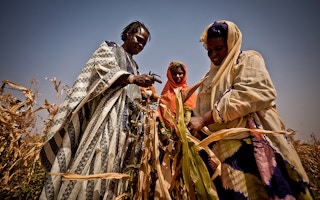Dr Hoesung Lee, chair of the Intergovernmental Panel on Climate Change (IPCC), told delegates at a meeting in Geneva, which is designed to flesh out the contents of a special report on 1.5C, that they bore a “great responsibility” in making sure it meets the expectations of the international climate community.
To be policy-relevant, the report will need to spell out what’s to be gained by limiting warming to 1.5C, as well as the practical steps needed to get there within sustainability and poverty eradication goals.
More than ever, urged Lee, the report must be easily understandable for a non-scientific audience. The IPCC has come under fire in the past over what some have called its “increasingly unreadable” reports.
Feasibility
In between the main “assessment reports” every five or six years, the IPCC publishes shorter “special reports” on specific topics. Past ones have included extreme weather and renewable energy.
The IPCC was “invited” by the United Nations Convention on Climate Change (UNFCCC) to do a special report on 1.5C after the Paris Agreement codified a goal to limit global temperature rise to “well below 2C” and to “pursue efforts towards 1.5C”.
The aim for this week’s meeting in Geneva is, in theory, simple: to decide on a title for the report; come up with chapter headings; and write a few bullet points summarising what the report will cover.
“
One notion that runs through all this, is feasibility. How feasible is it to limit warming to 1.5C? How feasible is it to develop the technologies that will get us there?…We must analyse policy measures in terms of feasibility.
Hoesung Lee, chair, Intergovernmental Panel on Climate Change (IPCC)
On day two of three, Carbon Brief understands six “themes” have emerged as contenders. Judging by proceeding so far, it seems likely that the feasibility of the 1.5C goal features highly on that list.
Referring to a questionnaire sent out to scientists, policymakers and other “interested parties” ahead of the scoping meeting to ask what they thought the 1.5C report should cover, Lee told the conference:
“One notion that runs through all this, is feasibility. How feasible is it to limit warming to 1.5C? How feasible is it to develop the technologies that will get us there?…We must analyse policy measures in terms of feasibility.”
The explicit mention of 1.5C in the Paris Agreement caught the scientific community somewhat off-guard, said Elena Manaenkova, incoming deputy secretary-general of the World Meteorological Organisation.
Speaking in Geneva yesterday, she told delegates she felt “proud, but also somewhat concerned” about the outcome of the Paris talks. She said:
“I was there. I know the reason why it was done…[P]arties were keen to do even better, to go faster, to go even further…The word ‘feasibility’ is not in the Paris Agreement, is not in the decision. But that’s really what it is [about].”
Overshoot
Dr Andrew King, a researcher in climate extremes at the University of Melbourne, echoes the call for a rational discussion about the way ahead, now that the dust has settled after Paris. The question of what it would take to achieve the 1.5C goal has been largely sidestepped so far, he tells Carbon Brief:
“I think one unintended outcome of the Paris Agreement was that it made the public think limiting warming to 1.5C is possible with only marginally stronger policy from government on reducing emissions and this is simply not the case.”
The reality is that staying under the 1.5C threshold is now nigh-on impossible, says King. Meeting the 1.5C target now means overshooting and coming back down using negative emissions technologies that “suck” carbon dioxide out of the air. The report will need to be explicit about this, he says.
King is cautious about overstating the world’s ability to meet the 1.5C goal, given that no single technology yet exists approaching the scale that would be required. He tells Carbon Brief:
“We will need negative emissions on a large-scale and for a long period of time to bring global temperatures back down to 1.5C. This isn’t possible with current technologies.”
Earlier this year, Carbon Brief published a series of articles on negative emissions, including a close up on the most talked-about option – Bioenergy with Carbon Capture and Storage (BECCS) – and a survey of which technologies climate experts think hold the most potential.
This story was published by Carbon Brief under a Creative Commons’ License and was republished with permission.
Read the full story.










